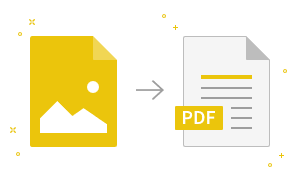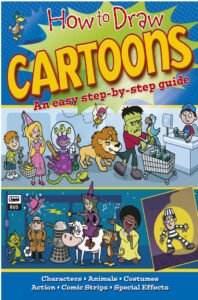NCERT Solutions For Class 7 Geography Social Science Chapter 2 Inside Our Earth
NCERT Solutions For Class 7 Geography Social Science Chapter 2 Inside Our Earth
Question 1. Answer the following questions briefly.
(i) What are the three layers of the earth?
(ii) What is a rock?
(iii) Name three types of rocks.
(iv) How are extrusive and intrusive rocks formed?
(v) What do you mean by a rock cycle?
(vi) What are the uses of rocks?
(vii) What are metamorphic rocks?
Answer: (i) The three layers of the earth are:
- Crust
- Mantle
- Core
(ii) A rock is a natural mass of mineral matter that makes up the earth’s crust.
Rocks can be of different colour, size and texture.
(iii) Three types of rocks are:
- Igneous rocks also known as primary rocks.
- Sedimentary rocks.
- Metamorphic rocks.
(iv) When the molten lava comes on the earth’s surface, it rapidly cools down and becomes solid. Rocks formed in this way on the crust are extrusive igneous rocks.
Sometimes the molten magma cools down deep inside the earth’s crust. Solid rocks so formed are actually intrusive igneous rocks.
(v) One type of rock changes to another type under certain conditions in a cyclic manner. This process of transformation of the rock from one to another is known as the rock cycle. Let’s understand it through example—Igneous rocks change into sedimentary rocks. When the igneous and sedimentary rocks are subjected to heat and pressure, they change into metamorphic rocks. The metamorphic rocks which are still under great heat and pressure meet down to form molten magma. This molten magma again can cool down and solidify into igneous rocks.
(vi) Hard rocks are used for making roads, houses and buildings. Stones are used in many games, such as seven stones (pitthoo), hopscotch (stapu/kitkit), Five stones (gitti).
(vii) When the igneous and sedimentary rocks are subjected to heat and pressure they change into metamorphic rocks. For example, clay changes into slate and limestone into marble.
Question 2. Tick the correct answer.
(i) The rock which is made up of molten magma is
(a) Igneous (b) Sedimentary
(c) Metamorphic.
(ii) The innermost layer of the earth is
(a) Crust (b) Core
(c) Mantle.
(iii) Gold, petroleum and coal are example of
(a) Rocks (b) Minerals
(c) Fossils.
(iv) Rocks which contain fossils are
(a) Sedimentary rocks (b) Metamorphic rocks
(c) Igneons rocks.
(v) The thinnest layer of the earth is
(a) Crust (b) Mantle
(c) Core.
Answer: (i)—(a), (ii)—(b), (iii)—(b), (iv)—(a), (v)—(a).

Question 4. Give reasons:
(i) We cannot go to the centre of the earth.
(ii) Sedimentary rocks are formed from sediments.
(iii) Limestone is changed into marble.
Answer: (i) To reach the centre of the earth one will have to dig a hole 6000 km. deep on the ocean floor. This is quite impossible and therefore we cannot go to the centre of the earth.
(ii) Rocks break down into small fragments known as sediments. These sediments are transported and deposited by wind, water, etc. These loose sediments are compressed and hardened to form layers of rocks known as sedimentary rocks.
(iii) Limestone is changed into marble because igneous and sedimentary rocks change into metamorphic rocks under a great heat and pressure.
Very Short Answer Type Questions
Question 1. What is called the uppermost layer of the earth? [Imp.]
Answer: It is called the crust.
Question 2. What is the special feature of this layer? {Imp.]
Answer. It is the thinnest of all the layers
Question 3. Name the main mineral constituent of the continental mass.
Answer: Silica and alumina
Question 4. Name the constituents of the oceanic crust. [V. Imp.]
Answer: Silica and magnesium.
Question 5. What is the radius of the core?
Answer: The radius of the core is about 3500 km.
Question 6. What are the main constituents of the core?
Answer: The main constituents of the core are nickel and iron. It is usually known as nife.
Question 7. What is the earth’s crust made of? [V.Imp.]
Answer: It is made up of different types of rocks.
Question 8. What are called igneous rocks?
Answer: When the molten magma cools, it becomes solid. Rocks formed in this way are called igneous rocks.
Question 9. What are fossils?
Answer: The remains of the dead plant and animals trapped in the layers of rocks are called fossils.
Question 10. What happens when igneous and sedimentary rocks go under great heat and pressure?
Answer: They change into metamorphic rocks.
Short Answer Type Questions
Question 1. What are minerals? How are they useful for mankind? [V. Imp.]
Answer: Minerals are naturally occurring substances which have certain physical properties and definite chemical composition.
Minerals are very useful for mankind. Some minerals like coal, natural gas and petroleum are used as fuels. They are also used in industries. Iron, aluminium, gold, uranium etc. are used in medicine, in Fertilizers etc.
Long Answer Type Questions
Question 1. Mention various types of rocks IV. Imp.]
Answer: Rocks are of the three types:
- Igneous rocks
- Sedimentary rocks
- Metamorphic rocks
- Igneous rocks. When the molten magma cools, it becomes solid. Rocks formed in this way are called igneous rocks. They are also called primary rocks. They are of two types—intrusive rocks and extrusive rocks.
- Extrusive rocks.When molten lava comes on the earth’s surface, it rapidly cools down and becomes solid. Rocks formed in this way on the crust Eire called extrusive igneous rocks. For example, basalt.
- Intrusive rocks. Sometimes the molten magma cools down deep inside the earth’s crust. Solid rocks so formed are called intrusive igneous rocks. Since they cool down slowly they form large grains. For example, granite.
- Sedimentary rocks. Small fragments of rocks are called sediments. These sediments are transported and deposited by wind, water, etc.These loose sediments are compressed and hardened to form sedimentary rocks. For example, sandstone is made from grains of sand.
- Metamorphic rocks. When igneous and sedimentary rocks Eire subjected to great heat and pressure they chsmge into metamorphic rocks. For example, clay changes into slate and limestone into marble.
Question 2. What do you know about the interior of the earth? [V. Imp.]
Answer: Our earth is made up of several concentric layers with one inside another. These layers are three in number—crust, mantle smd core.
Crust. It is the uppermost layer over the earth’s surface. It is the thinnest of all the layers. It is about 35 km on the continential masses and only 5 km on the ocean floors.
The continental masses are made up of silica and alumina. It is thus called sial (si-silica and al-alumina). The oceanic crust mainly consists of silica and magnesium. It is thus called sima (si-silica and ma-magnesium).
Mantle:It is just beneath the crust.It extends up to a depth of 2900 km below the crust
Core:It is the innermost layer. Its radius is about 3500 km. It is mainly made up of nickel and iron and is known as nife (ni-nickel and fe-ferrous, Le., iron). The central core has very high temperature and pressure.

